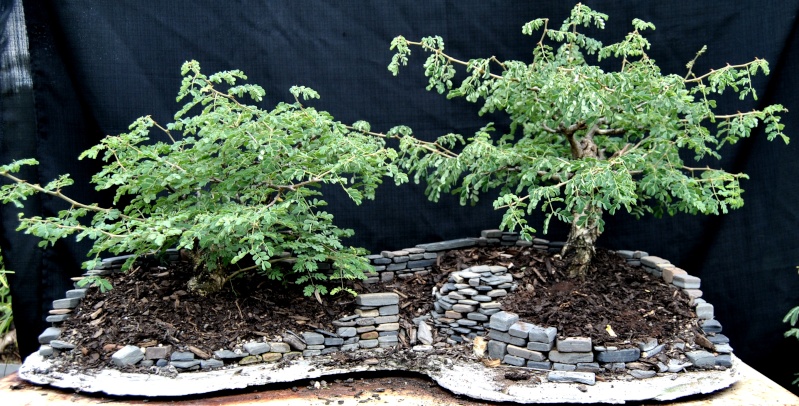 The fallen trunk is actually a very
The fallen trunk is actually a verythick root removed from another bonsai. The root was thrown under the benches but when it started sprouting new shoots it was covered up with soil.
It was removed spring 2012 from the ground, cut back for the repot and potted up in the current pot.
I am planning to portray a very big old tree that has fallen over and this all that is left after most of the old trunk died and rotted/broke/burned away. Some carving will have to be done. The t:ree February 2013
From the before photographs have been posted the tree was planted in a little bit wider but shallower pot. The tree grew well but I did not get much thickening of the trunks and the branches.
The tree was cut back to get some lower branches going. The tree did not respond very well. While I was on holiday for a month in December my Celtis was attack by whitefly and some sort of gnat. When I came back from holiday I sprayed all my Celtis to kill the pests.
The tree was cut back again slightly and wired. At this stage this side looks like a nice front. We still have three months of growing left – hope it will progress nicely. The deadwood on the tree will also be carved end of March 2014.
From the last pictures posted, the tree has not progressed well because the specific hybrid went into early hibernation this year – did not matter what I have tried, the tree refused to grow!
To not stress the tree any more I decided to do no further work on the tree.
My plans for the tree is still the same – it will portray a tree that has fallen and rotted and it re-sprouted three new trunks. As soon as the branches and trunks have developed I will carve the old trunk into a hollow and I will also do some work on the trunks.
I am happy with the style I have chosen and I can not wait to work on the tree summer 2014.
Some carving done.
Making a hole for drainage:
Connecting the hole to the front of the fallen trunk:
Some interest carved into the top of the deadwood:
After the hair cut and some wiring:








































































